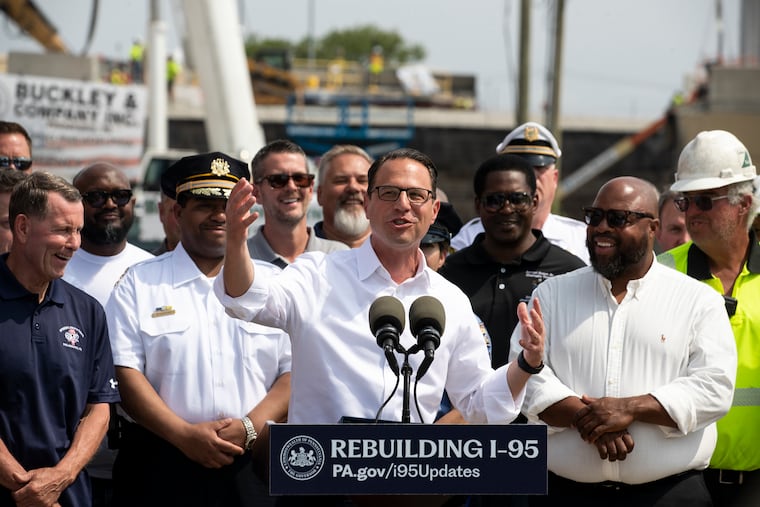When it comes to smart and efficient fixes for Philly’s problems, why stop at I-95? | Editorial
The speed with which officials from multiple agencies have worked to repair the highway is noteworthy. It also raises the question: What else can we get done with this level of urgency and ingenuity?

After a tanker truck fire destroyed a section of I-95 in Northeast Philadelphia — severing a major transportation artery and costing commuters time and money — this board called upon political leaders to show that government can act swiftly to solve problems.
Led by Gov. Josh Shapiro, officials took up the challenge.
On June 15, only a few days after the collapse, Shapiro announced that demolition of the damaged section of the highway was complete. His team set up a continuous livestream of the construction work, the monitoring of which even proved to be a popular Father’s Day activity. On Tuesday, the governor announced that the highway would reopen this weekend, less than two weeks after it closed.
While a full reconstruction will take months, PennDot Secretary Michael Carroll and his team devised an innovative plan to create a temporary bridge using recycled materials. They deserve kudos along with the building crews that have worked around the clock to restore access. It was also heartening to see collaboration between different levels of government, as Shapiro toured the site with President Joe Biden while Mayor Jim Kenney met with U.S. Transportation Secretary Pete Buttigieg.
“We haven’t always had a can-do attitude around here, that we can get big things done, that we can get it done quickly and safely,” Shapiro said Tuesday. “I’m a governor who believes we can get things done again. We’re going to change that attitude of people being surprised to folks expecting excellence from us.”
Good. Let the speed with which I-95 is restored be the catalyst that sparks the question: What else can we get done with this level of urgency and ingenuity?
Let’s start off easy. I-95 isn’t the only vital regional transportation link to fall in dire straits. The Market-Frankford El is the backbone of the city’s public transportation system and a center of economic growth in the city. More than 20% of city transit trips on SEPTA happen on the El, with ridership of over 170,000 per day even after the pandemic-era declines. That’s more than one in 10 Philadelphians — even more than the roughly 160,000 people per day who use the affected section of I-95.
Cracks in the 1990s-era subway cars used on the route have made operations difficult. Since problems first appeared in 2017, SEPTA has spent tens of millions of dollars refurbishing the cars using a method that’s become known as the “hoagie of steel,” but equipment shortages still lead to out-of-service trains and longer wait times for passengers. According to SEPTA, it will take five to seven years for replacement cars to arrive. Can the city really afford more than a decade of cobbled-together service on the region’s most traveled route?
In the shadow of the El lurks another issue requiring an urgent solution: the open-air drug markets of Kensington. Children and families in the neighborhood are forced to walk over used needles and people with substance use disorder to get to school, shop, and go about their daily lives. Librarians at McPherson Square have learned how to use the overdose reversal drug Narcan to keep people alive, and Kensington has become a national symbol for the challenges cities face in addressing the problem of people struggling with addiction and those who would exploit them.
Northeast of Kensington, Frankford High School offers a painful example of the $9 billion needed for repairs and updates to the School District of Philadelphia’s buildings — and the students who suffer the consequences. The school was closed earlier this year and is slated to remain shut for the next school year. It is disheartening to consider that because of pandemic closures and asbestos abatement, Frankford’s Class of 2024 will have spent more time learning outside of their school building than they’ve spent inside of it.
Of course, fixing a hole in the highway is much easier than tackling the kind of decades-long neglect that has allowed these other problems to fester. After all, there is a clear beginning, middle, and photo-op end to rebuilding a bypass — not so for the kind of complicated challenges that plague Philadelphia.
The fast reopening of I-95 is undoubtedly worth celebrating, but none of us should be satisfied to stop there. We must demand more of our leaders. If the measure of a society can be found in how it treats its most vulnerable members — if a community’s actions reflect its values — then what we value shouldn’t just be measured in mile markers.